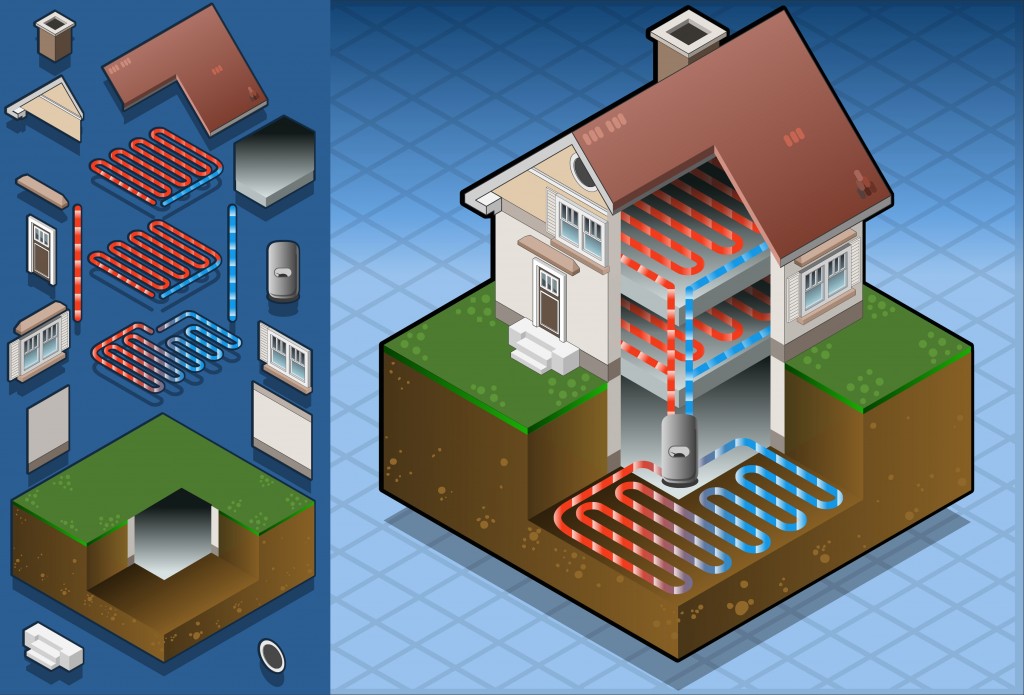As we’ve mentioned in a few recent blog posts, now is the time to have your geothermal heating and cooling system installed. The 30% federal tax credit on new geothermal system installations is set to expire in just a few short weeks. Do not miss out on these savings! Schedule your installation today and enjoy all of the great benefits of using a geothermal heating and cooling system in Irmo, SC.

Rather than go over the details and requirements of the federal tax credit or the benefits of using geothermal systems again, we want to discuss a key component of these systems in a bit of detail. This component is the geothermal ground loop. This loop plays a vital role in the geothermal heat exchange process.
What Is a Geothermal Loop?
A geothermal heating and cooling system is a heat pump. Air-source heat pumps exchange heat with the air outside. They work like air conditioners in the summer, evaporating refrigerant indoors to draw heat out of the air inside, and then condensing that refrigerant outdoors in order to release the heat. In the winter, they reverse this operation to draw heat out of the outdoor air, compress that refrigerant, and release the heat indoors.
Geothermal, or ground-source heat pumps, exchange heat with the ground rather than the air. That means that they require the use of different equipment to facilitate their specific method of heat exchange. This is where the geothermal ground loop comes into play.
The heat pump in a geothermal system shares much in common with standard heat pumps. The actual exchange of heat with the ground is managed by this ground loop, though. The loop circulates not refrigerant, but an antifreeze solution that absorbs heat from the ground in the winter or distributes it during the summer.
In the winter, this solution draws heat out of the ground. It makes its way to the heat pump, and exchanges the heat with the refrigerant in the pump. It’s business as usual from there. In the winter, the refrigerant in the heat pump exchanges its heat with this solution, which then deposits it into the ground.
Geothermal Loop Design
One of the reasons why a professional geothermal system installation is so important is to ensure that the system is designed in a way that will most benefit your home and property. The type of geothermal loop that is used in the system is a major consideration in the design process. There are two basic categories: closed loop systems and open loop systems.
Closed loop systems include the follow subcategories.
- Horizontal loops, which are usually the most cost-effective option in residential applications. They do require sufficient land space for installation. Trenches are excavated, and the required pipes are installed within.
- Vertical loops, which are often used in commercial applications where land area is insufficient or soil too shallow for a horizontal installation. Holes are drilled into the ground, anywhere from 100-400′ deep, and the pipes are installed within those holes. They connect at the bottom with a U-bend to form the loop, and the vertical loops are connected with horizontal piping.
- Pond/lake loops, which may be used on properties with adequate water bodies, and are often the most affordable type of loop for these properties. No excavation or drilling is required, because the loop is simply installed in the water. The coiled pipe must be at least 8′ down to avoid freezing.
Open loops systems use well water or even surface body water itself as the heat exchange fluid, eliminating the need for the transfer of heat between the antifreeze solution and refrigerant commonly used. The water circulates through the entire system, and then back to the ground through a recharge well or simply via surface discharge. This method in particular is subject to the scrutiny of local codes and regulations.
In addition to these more standard geothermal loop options, there are also hybrid systems that combine characteristics of different loop systems. As you can tell, choosing, designing, and installing a geothermal loop system is not something that just anyone can do successfully. It really requires the skill and expertise of experienced, skilled professionals.
Schedule your geothermal installation with Fulmer Heating & Cooling.





